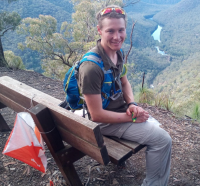
I am grateful that I’ve had the chance to go on several night rogaines with seasoned competitors in earlier years. In addition to allowing me to do night rogaines comfortably on my own accord, it has given me the confidence to do night-time hiking, trail running, orienteering and cycling; something that many of my friends think I’m crazy doing, but is second nature to me. I really love rogaines that have a mix of day and night in them, as it feels like two separate events. And needless to say, it forces one to be very careful with navigation as being lost in the pitch black can be a very “dark” experience!
The main addition to the kit list for a night rogaine is, of course, a good headtorch, and with several night rogaines coming up, I thought it would be a bright idea to get a handful of seasoned rogainers to share their own experience on which one(s) they use, how they use it and why. Long-time rogainers Martin Dearnley, Graham Field, Mike Hotchkis, Marg Cook and John Havranek helped me out. Let’s start with Martin:
Martin Dearnley: I have used the same Ay Up LED head torch for over ten years. Made in QLD, it has a 400 lumen setting for general use and an 800 lumen setting for spotting controls. I still use the original batteries. One is 6-hour and the other is 12-hour and both are taken in a 24-hour rogaine.
The Ay Up torch shines twin beams so that one can be set further ahead of the other. The twin beams also seem to make it easier to see trip hazards while walking on rough ground. The original cost of around $350 is much the same today. The current Ay Up head torch advertised today looks very similar to mine from 2009.
While the Ay Up torch has been reliable, I take a small Petzel Tikkina head torch as a spare.
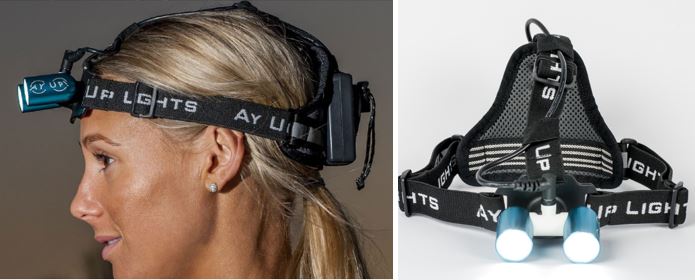
Marg Cook: Back when we started rogaining in 2008, we had normal AA-battery camping head-torches, which allowed you so see about 10 metres in front of you! Not very effective, but we didn’t know any better. At a rogaine around 2010 we were amazed how far some people could see. We discovered Ay-Up then, and have never looked back. They give a fantastic light.
The new batteries have three settings: low, medium and high power. The lower power settings are good for travelling along tracks or through reasonable bush. We use the high-power setting when navigation is challenging and when casting around for the control flag. It picks up the reflectors on the flag, and also the orange and white glows in their light. Always a welcome sight.
The current price for a “Run” system is around $235. We still have the original lights and have recently purchased our first replacement set of rechargeable batteries – which are quite expensive at $121 each. We considered changing to a different head-light system, but decided that what we were using was so good, it was worth the outlay.
The Run system has both the light and the battery on a head-harness, isn’t too heavy and is reasonably balanced. I often wear a beanie with the head-light over the top.
Graham Field: I have a Spikelight which I purchased in 2012 when I started doing night rogaines. It’s a V2 Spikelight and I think that they have now have got up to V5. It was expensive (>$300), but well worth it for several reasons:
• It had a fantastic beam, both focussed and spread.
• It was being built by a small, Australian start-up company in WA and looked like a well-engineered product. The founder is a rogainer, he knows the requirements for night events, and he was responsive and happy to talk to me about the product.
It’s still working as well as when I bought it – it’s had a new set of batteries (commonly available) and a new headband, provided free by the manufacturer after about four years!
It is programmable, but not overly complex – it has a single button that you click in various sequences to get different functions, like beam type, intensity, locking etc. I deliberately keep it simple so that it’s easy to flick between narrow beam and five intensities of spread.
I also have a couple of Petzls, one of which I carry as a backup, but rarely use.
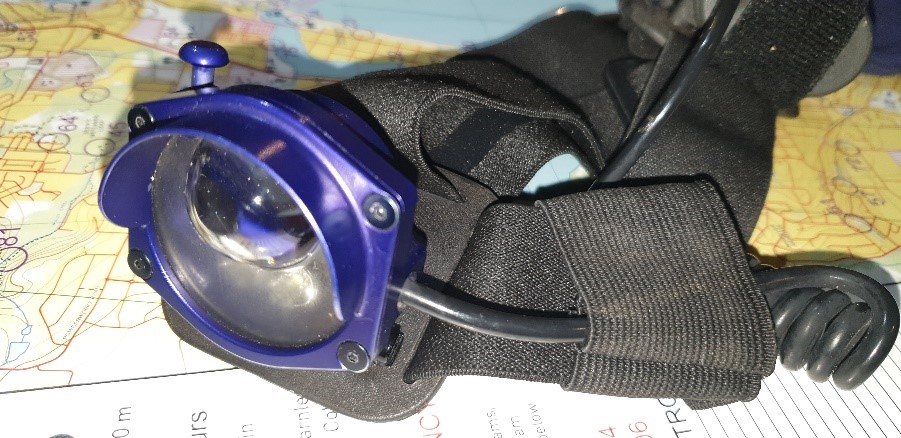
John Havranek: My main running and rogaining torch over the past year is a Fenix HL60R 950 lumen rechargeable LED headlamp which was $120. It has five settings from dim to super bright and is rechargeable via USB.
I also have a Petal Tikka xp2 that I now take along as a spare – it runs on AAAs.
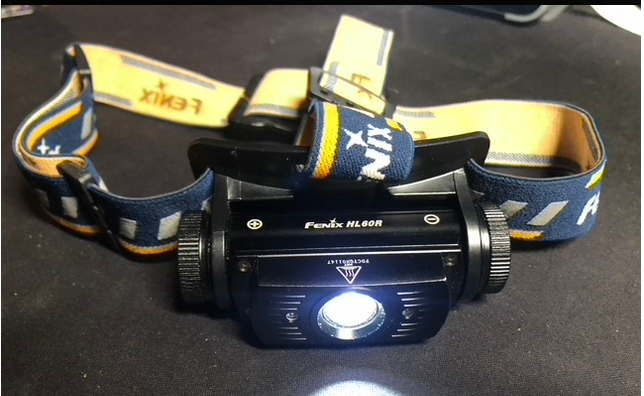
Mike Hotchkis: I’ve been using a Petzl NAO for the past five years, bought on the recommendation of rogaine partner Neil Hawthorne. Not cheap then, and only got pricier. Current price about $370, plus $150 for a spare battery. It has ‘reactive’ lighting – so you don’t get blinded when you look down at the map – which works well.
Tristan White: I too have had the NAO since 2013 and it’s still going strong. In the following picture you’ll see the batteries are numbered – that’s because I’ve dropped them both too many times to count when I’m trying to change them!
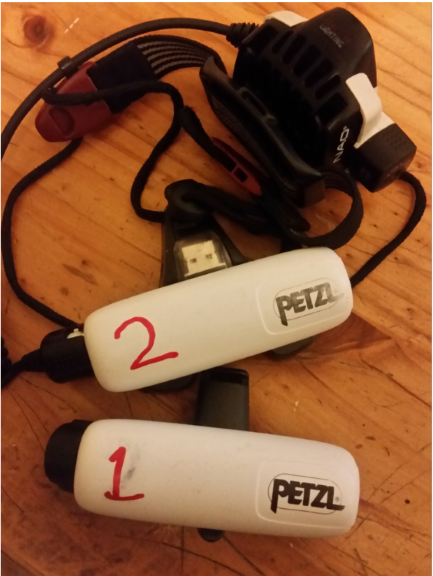
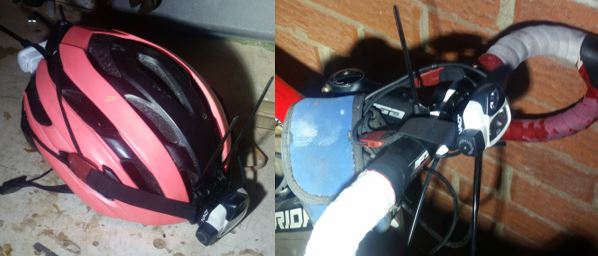
TristanW: How do you find navigating in the dark different to during the day and how do you use the different settings on your torch for different parts of the course?
MartinD: Navigation at night is quite different from during the day. Most mistakes have been made in the first two hours after sunset, usually because we have still been moving at daylight speeds and terrain features have become much less visible. Night navigation relies on compass bearings and step counting and these must be done carefully because it is much harder to get back on track after getting lost at night than during the day.
GrahamF: 95% of the time I use the spread on the 3/5 or 4/5 setting; the lower settings give better battery life. I generally use 3 for just following the map on good terrain, 4 for more difficult terrain and 5 if I really need to watch where I’m going. When within range of a control, I’ll flick on the spot for an intense, narrow beam that will pick things out for up to 300m – pretty much as far away as you can see. It does chew the battery in this mode though, so selective use is the key. It’s also not great for just walking with, which is a good way to remember to use the spread mode. I’ve learnt that the better your nav, the more battery life that you get!
Night navigation is a whole new game – and topic for discussion. For me, the biggest difference is the need to slow things down a bit and take more care with everything – route selections need to be more conservative, catching features are essential, less reliance on topography and more on map metrics – accurate bearings, distances etc. along with accurate pacing and vigilance checking bearings across team members. Add this to the fact that you’re probably a bit tired (physically and mentally) from already doing 6 hours or so in the light and the possibility of a mistake is heightened.
Depending on the terrain, moonlight and vegetation cover, it’s sometimes advantageous to turn the light off or right down and look into the distance to re-establish your perception of the surrounding landform. You can often better pick out an indistinct track at night by looking at the tree cover on the immediate horizon.
The consequences of a mistake at night are amplified considerably, although in my experience few mistakes are directly attributed to the night or a head-light. Heavy mist one evening made us totally lose position and orientation (in this circumstance, a bright light was a distinct disadvantage). I find that most mistakes at night are the result of fatigue and losing (mental) focus.
JohnH: I tend to mainly use the second lowest or middle setting while on tracks or navigating which is enough and will run for the night on a single charge. Occasionally I’ll go the higher levels but find it’s not really required too often – maybe when around a control that we can’t seem to find. There is also a low red-light option that I sometimes use when reading a map to avoid too much glare and impacting my night vision (or around the hash house to avoid blinding others).
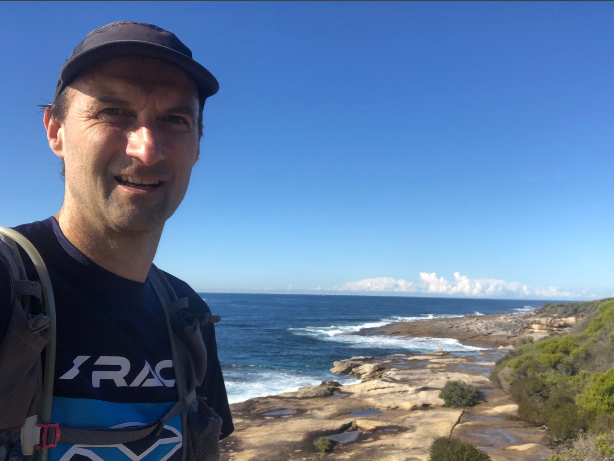
MikeH: My Nao has multiple intensity settings. I use it on 25–50 % settings most of the time and only turn it up to full power if we don’t strike the flag on first approach.
When I first got it, I missed not having focus control, which I’d had on previous torches. I see the latest Nao has this feature. But these days, torches are so bright you hardly need it.
My advice for night nav – be conservative. No shortcuts. Aim off wider than in daylight, just to be sure. Go a little extra distance, find good attack points. Compass is always in my hand.

TristanW: For a day/night rogaine, do you specifically choose to attempt/avoid finding any particular controls at night?
MartinD: At night, we prefer controls that are accessible from tracks and ridgelines so we are less likely to get lost if we make a mistake.
GrahamF: It’s really just common sense, but in general, I opt for the straightforward controls at night – good attack points, good catching features, close to tracks etc. I avoid difficult terrain and long (>500m) traverses, especially where there is a route change along the way. Maybe this is why I’m just an average rogainer…
MargC: Night time is different. You lose the visual cues that help you know where you are. Our usual mistake is to overestimate how far we have travelled, then get misplaced by not going far enough. We learned that lesson so well that in one rogaine we walked right off the map trying to compensate for our coming up short. We also move more slowly at night, with less confidence. We check the map more often. Our aim is to not be lost at 11pm. Unfortunately, we don’t always achieve this.

MikeH: For me, control selection is not a foremost consideration in route planning. If the course is well set, and you navigate with care, you can find everything.
TristanW: How do you conserve your batteries and what spares do you take?
MartinD: I take a spare battery and I keep my light level low until I need to spot for a control.
MargC: Our batteries run for 12 hours on half power, so we expect to do the full rogaine on the one battery. We take a spare battery and also a spare head-torch between us. Another useful thing is to actually take the Ay-up with you. At one Rogaine, one of our Ay-Up’s was left safely sitting in the back of the car!
Our torches are also useful for bicycling, and actually show up the road ahead. We tend to fit them to the helmet. We also use them attached to the front of the kayak to light up the river banks during the Hawkesbury Canoe Classic. The idea of running close to the river bank is to use the back eddy when paddling against the tide. It has gained us many minutes during the race, and given us that rosy glow as we pass people who are paddling further out in the incoming current.
GrahamF: As mentioned previously, limiting the use of the spot and flicking to a lower spread mode works best for preserving battery life. The Spikelight uses 2x 18650 Lithium cells – under normal operation, these give me about 8-10 hours of operation. I carry two spare batteries generally, four for a big event where I’m anticipating needing the spot for a longer time.
I also carry a spare headlight that will allow me to continue for several hours with adequate light. Sometimes I take two! Without tempting fate, the Spikelight hasn’t let me down since I’ve had it.
JohnH: I take a second headlamp as spare – rather than a battery – in case my (or my partner’s) main one is lost or damaged in some way.
MikeH: Petzl Nao battery lasts about 7-8 hours the way I use it. Need a spare to get through the night. It would last longer if used for longer on lower settings, but I don’t need to, so I don’t.
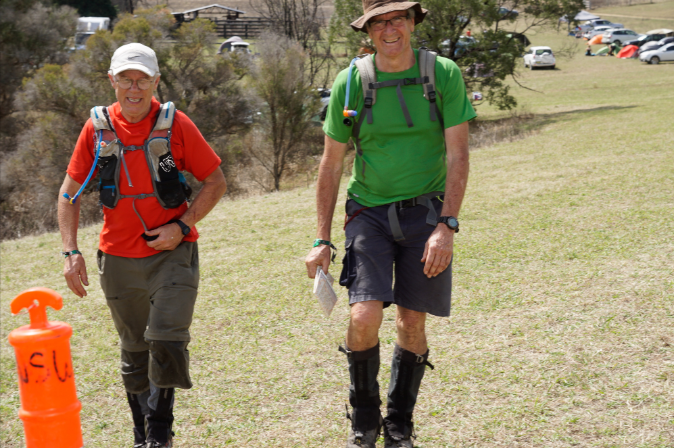
TristanW: Aside from rogaining, how else do you use your headtorch?
MartinD: My Ay Up head torch is occasionally used for spotting wildlife at night.
GrahamF: It’s my main light for any night activity… night orienteering events, helping out with multi-day or early morning trail running events, doing anything around the house at night (like looking for possums in the roof) and as an emergency light when the power goes off. Despite having several other cheaper headlights, I always pick up the Spikelight as it has such a powerful beam. Why use something with less light?
Unfortunately, you can’t buy them anymore, but if you have a look at the Spikelight’s website, the door has been left open for a come-back. Maybe they were engineered too well and never broke, maybe cheaper imported lights made the business uneconomic – either way, I reckon it’s a great Aussie product designed specifically for our sport.
JohnH: Trail running and mountain biking. The high beam is great for mountain biking but only lasts about an hour at best.
MikeH: Camping – but Petzl Nao is overkill for that, I use something cheap instead to conserve the battery.
Final comment: torches are now so bright that night nav is losing its challenge, and most rogainers are guilty of causing light pollution. Perhaps we need a torchlight intensity limit. Many sports limit technology, should we do the same? I’d like to see a special category for rogainers prepared to go out only with hurricane lamps. Could suit the ultra-vets, at least they might know what I’m talking about! You have to carry a supply of paraffin.
I use Ayup because its two beams make it so good at spotting the reflection of controls but I get seriously dazzled whenever reading the map. To solve this problem, I use a small cheap low power camping headlight on my forehead under the Ayup just for map reading. (I use a baseball cap to keep the separate with the Ayup on the lid of the cap). This sounds like overkill but works for me. When on a track with enough moonlight, this allows me to turn off the Ayup and conserve its battery life and my night vision, and use only the small headlamp to stay in contact with the map.